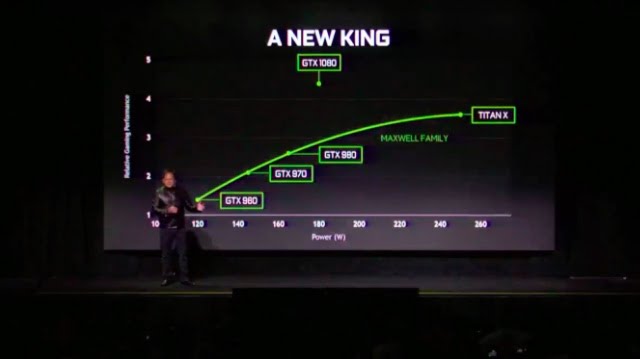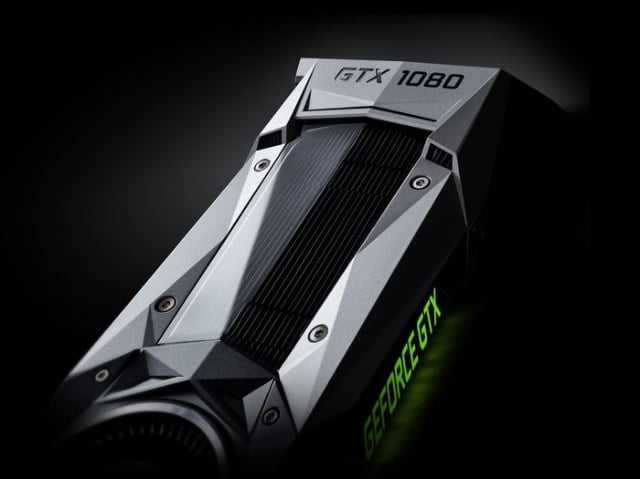Nvidia lands a critical hit in the GPU wars – and effectively kills its GTX Titan – with the astonishingly fast, low-power, and (relatively) cheap GTX 1080.
Moore’s law states that the number of transistors in an integrated circuit doubles every two years. What does that mean? In purely simplistic terms, it means that newer versions of complex things – like processors, or in this case graphics cards – are twice as beefy as their forebears approximately 730 days down the road, without needing to get any bigger. In reality it’s not always a perfect fit (and often the bloat of software requirements can offset the benefits of architectural improvements) but it’s been a wonderful yardstick over the years.
TL;DR: Technology gets better. Fast. Really bloody fast.
Forget the shallow, petty console wars; the real video game arms race is in GPU technology, and Nvidia is going all out in the war – and the practical application of Moore’s law – with its unbelievable new GTX 1080 graphics card.
This is ostensibly what happened with Nvidia’s GTX 1080 release announcement:
Nvidia: You want a card that’s more powerful than the best card that went before it, the GTX Titan behemoth currently atop the graphics card pyramid?
Consumer: Great! That would be amazing, actually!
Nvidia: How much more powerful do you want it? Will twice as powerful do?
Consumer: Sweet! Sounds like it could be expensive, though.
Nvidia: So, erm… what do you think you’ll have to pay for this GPU Shangri La?
Consumer: At least the same as the Titan X? One and a half times? Twice as much…?
Nvidia: How about somewhere around half the price? Does that work for you? Oh, and did we mention it’ll use about half the power of the power too? Hello…? Are you still there…? Did you pass out…?
The new GTX 10 series cards, including the flagship GTX 1080 and the still-an-amazing-sounding-card-and-not-really-a-compromise-at-all GTX 1070, are based on 16 nm fabrication and a die size of 294 mm2 – both roughly half the respective values of the GTX Titan series card, the reason behind that reduced power consumption – yet still maintaining around the same number of transistors, roughly 50% higher clock speed, and a 33% increase in preliminary FLOPS figures.
What do FLOPS mean? Prizes? No, not prizes. FLoating-point Operations Per Second (calculations of complex numbers) is a measure of computational power more usually assigned with super computers and rendering farms, but given the tremendous improvements in the latest generation of Nvidia cards – the GTX 1080 and 1070 – are derived their latest Pascal architecture for computational workloads, it’s nice to pay a little bit of respect to the driving force behind our latest super-toys.
Here’s how that looked at the reveal presentation:
And this is all we could think of when that PowerPoint slide graced the big screen:

Presumably some lower-end models around the GTX 1050 and GTX 1060 mark will follow, but not so close to the still relatively recent GTX 950, but for now we’ll have to make do with the ludicrously exciting, best thing to happen to graphics cards in a long time, absolute giant of a card that is the Nvidia GTX 1080 (retailing at $599 US) and it’s still bigger than all the other kids in the schoolyard little brother, the GTX 1070 (retailing at $379).
It also looks really rather beautiful, in a Christopher Nolan’s Batmobile kind of way. You know, if you’re into that kind of thing. Until the OEMs get hold of it…
Pick up the GTX 1080 founders edition direct from NVidia’s store, or the third party GTX 1080 – with improved overclockability and funky coolers – from Amazon.








